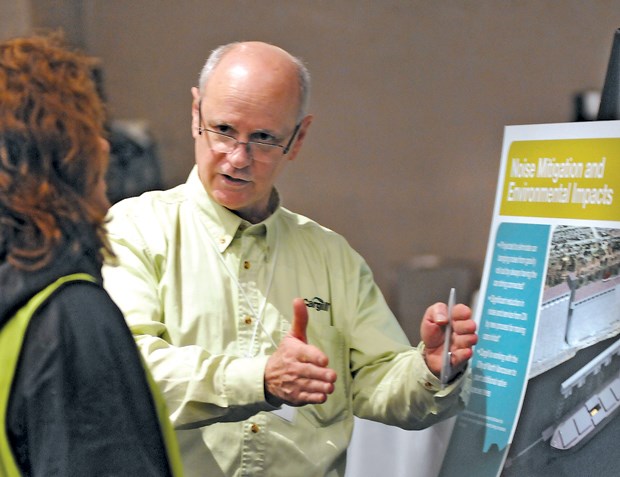Record exports of commodities flowing through Port Metro Vancouver likely indicates more expansion projects are on the way.
The port doesn’t release how much of each commodity is shipped through specific terminals, as it would be “commercially sensitive,” but the overall exports hint at how busy the North Shore’s various terminals were.
Metallurgical coal exports, much of which ship from Neptune Terminals, were up one per cent at 26.1 million tonnes, Potash, also from Neptune, was up 14 per cent at 7.5 million tonnes but grain, which is shipped from Richardson International and Cargill Canada, had the biggest increase, jumping to 19.6 million tonnes.
“That’s 22 per cent above the previous record so it was a really, really strong year,” said Robin Silvester, the port’s president and CEO.
Silvester attributed the boost to a higher than expected grain harvest in 2014 and increased capacity at Richardson, which built a new bank of silos. Cargill, meanwhile, is set to expand its rail lines.
“It was a bumper year within a long-term trend of growth so within another five years, that’s likely to be a normal year,” he said. “If you look at the fundamentals driving potash and grain, it’s about feeding the world’s population and the population of the world is growing.”
Global demand for steelmaking coal may drop with a cooling economy, Silvester said, but he still expects exports from Neptune to grow in 2015.
“They invested about $300 million in that facility which is obviously a huge project . . . but that meant their capacity was reduced while they were making those investments,” he said.
The growth in exports via the North Shore likely means more expansion of rail and shipping facilities is on the way, including one application recently filed by Cargill, Silvester said.
“What we see fundamentally is there is clearly demand for increasing capacity,” he said. “What we expect to see is more of what we have been seeing, which is investment to maximize the efficient use of the land for those different facilities.”
The port only has one more piece of waterfront property that hasn’t been developed, which is at the foot of St. Patricks Avenue. Any redevelopment of the site will be limited by its relatively small size, Silvester said.
“You couldn’t imagine a whole big new terminal there because there isn’t the space. The question of whether it’s a niche terminal or whether it’s rail support capacity is yet to be resolved,” Silvester said.
The port also owns an undeveloped plot of land on Dollarton Highway next to a private school currently on the market for $33.9 million. The land likely has a medium-industrial future, Silvester said.
“I can say there is a lot of discussion going on with a lot of different parties at the moment but there’s not anything really at a stage where we could talk about it,” he said.
“It’s early in the process. But I think, over time, industrial land is in such short supply in the Lower Mainland that we can expect a parcel of land like that to be developed for industrial use.”
Any proposed changes to Western Stevedoring’s Lynnterm Terminals property at the foot of Mountain Highway are still at the “conversation” stage, Silvester said.
“We don’t have an application from them at this stage for any change to that terminal. If they were changing it, they would have to go through a permitting process.”
The only work that remains for the Low Level Road is to install some noise barriers, open the Spirit Trail and “have a celebration,” Silvester said, which should be happening in a month’s time.



